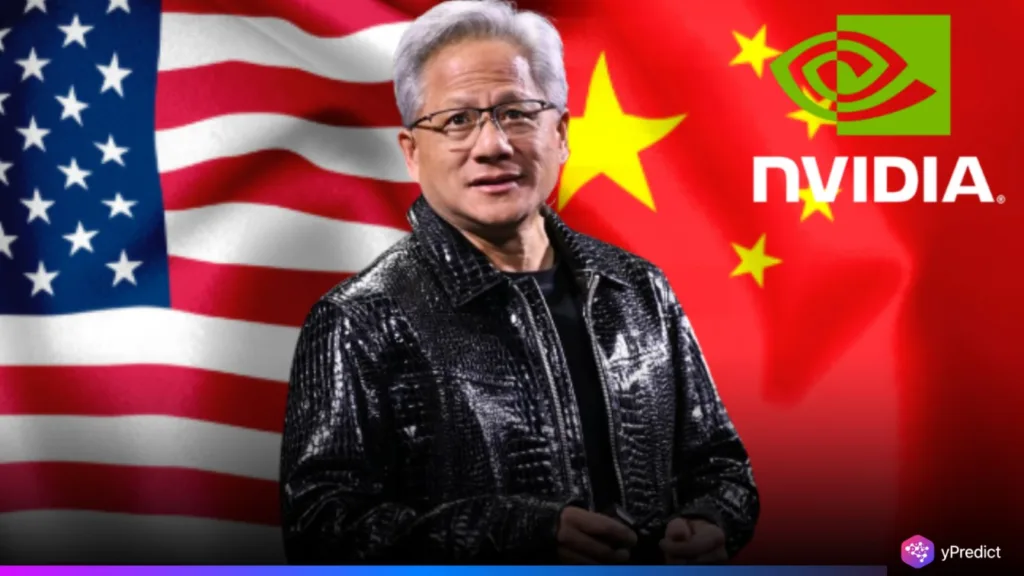
Jensen Huang, the ceo of Nvidia, will visit China next week to discuss business with officials in Beijing, strengthening the company’s presence in China’s expansive AI market. Huang’s visit marks nvidia’s further commitment to the chinese ai market just after the trump administration put a block on nvidia in selling its h20 processor to china to limit china from advanced ai chips. as trade issues develop, nvidia still provides protections to its ai presence in china where it generated $7.6 billion in revenue in 2023.
NVIDIA is not only preserving the business backdrop. It fights to maintain its AI leadership as trade avenues shift. A dependency on China is writ large in terms of AI, so the visit adds to the strategy to continue supporting access in a region where demand for AI is at a record high.
H20 Processor Ban Fuels AI Industry Uncertainty
The expiration of the U.S. government ban on shipments of Nvidia’s H20 processor to China has created more friction in an already fraught technology trade war. The H20 chip, designed for advanced AI workloads, including data centers and generative models, was a key piece of Nvidia’s expansion strategy in China. The US blocking exports of the chip is a clear indication that the U.S. intends to cut off China’s access to advanced AI technology.
The move has important implications for Nvidia’s ability to provide its newest AI products to a very important market. However, it also raises bigger questions about how U.S. export controls could impact global AI development. Further, the ban demonstrates a pattern of utilizing semiconductors as leverage in geopolitical battles. Today, AI chips are at the vanguard of international policy disputes.
Nvidia Counters Isolation With Direct Engagement
While Washington doubles down on restrictions, Nvidia is choosing direct engagement. Huang’s trip emphasizes diplomacy and cooperation over a retreat from the market, which contrasts sharply with the U.S.’s desire for tech isolation and indicates that Nvidia will not walk away from a market crucial to its AI roadmap easily.
In addition to smoothing a way for Nvidia’s presence in China, Huang’s meetings could result in workarounds involving locally customized adaptations to chip versions, changes to business models that still conform to U.S. policy, while still keeping China in Nvidia’s AI ecosystem. Nvidia has a history of adapting to changes in global circumstances and has the potential to do the same with AI. Instead of retreating from innovation, Nvidia is navigating the Department of Commerce’s regulations, adapting how it deploys AI innovation.
AI Supply Chains Face New Pressures
The H20 processor ban also puts AI supply chains under renewed stress. With China being a notable consumer of AI hardware, Nvidia will now need to rethink how it distributes its products and offers service continuity between regions. The ban may disrupt global supply routes and risk bottlenecks in the development of AI infrastructure.
By keeping lines of communication open with China, Nvidia may be able to stabilize portions of the AI supply chain. Nvidia still might be able to present local assembly or licensing opportunities to stay on the right side of compliance while still addressing China’s AI needs. In a time-sensitive industry, this kind of flexibility may be the difference between losing ground and leading innovation.
Nvidia’s AI Future Hinges on China Ties
Nvidia’s China visit sends a clear message—the company will not let politics derail its AI goals. The H20 processor ban has captured international attention, and Huang’s diplomatic push is a brave response to these increasing restrictions. Nvidia is aware that the future of AI is global and that staying relevant also means staying connected. The tech trade war may shape policy, but Nvidia is shaping its own AI path by choosing engagement over exit. As the AI arms race accelerates, China’s strategy will likely serve as a model for other tech giants navigating a divided digital world.






